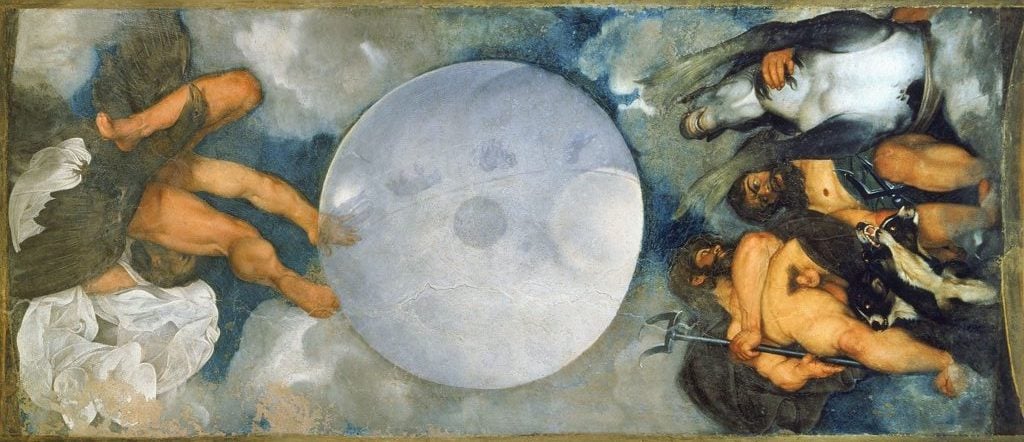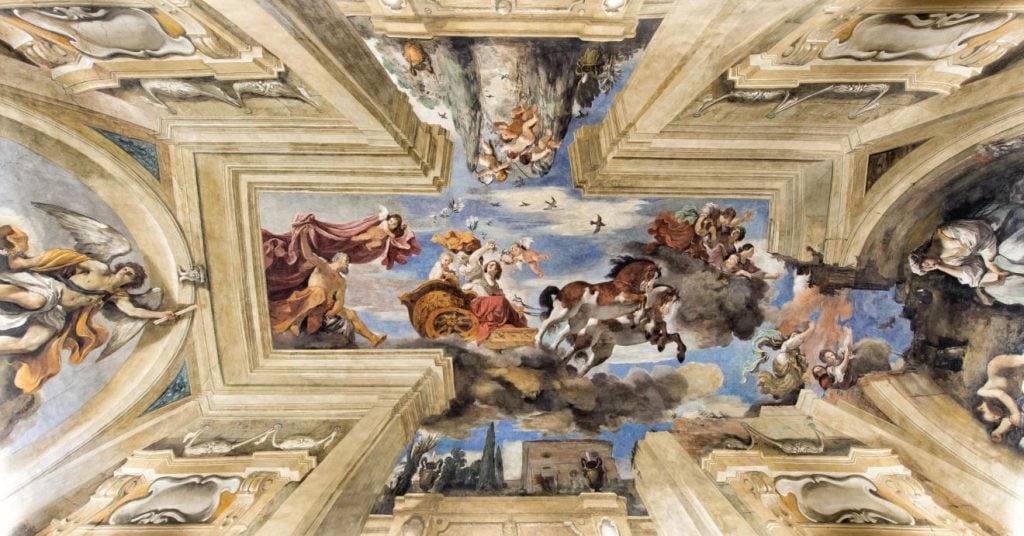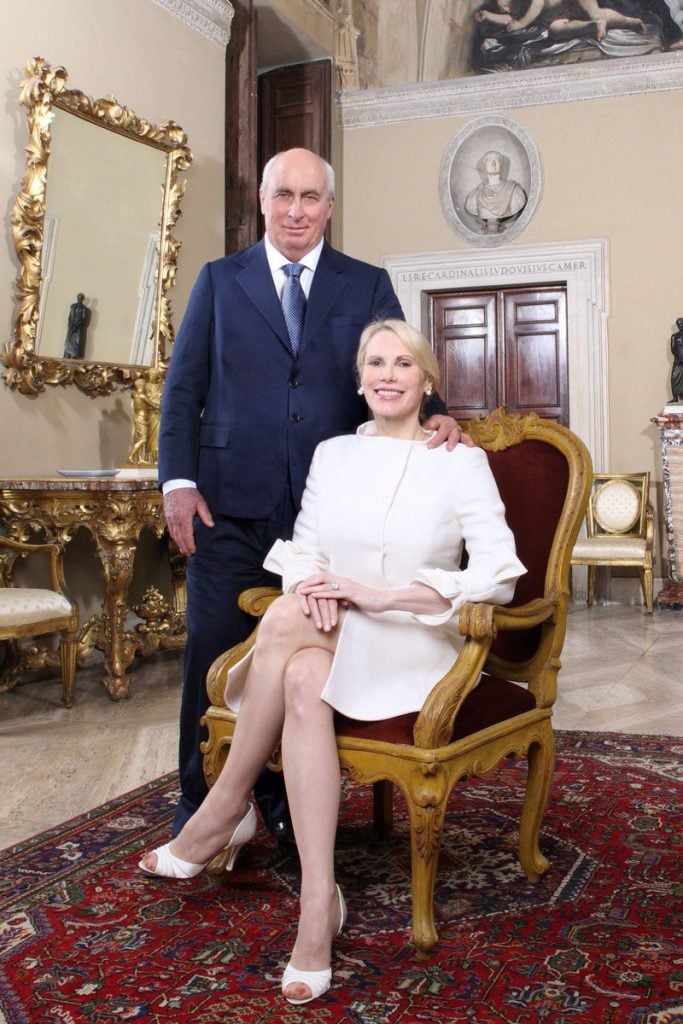Market
The Only Ceiling Mural Caravaggio Ever Painted Could Fetch More Than Half a Billion Dollars at Auction—and It Comes With a House
The Roman manse has belonged to the same family since 1621.

The Roman manse has belonged to the same family since 1621.

Sarah Cascone

Have you ever wanted to buy a Roman villa? How about one that comes with its own built-in Caravaggio mural? Now is your chance, as the Villa Aurora hits the market at a cool €471 million ($546 million) price tag.
The stunning Roman villa has the only ceiling painting the Italian master Caravaggio ever made. The oil-on-plaster mural depicts the Roman gods Jupiter, Neptune, and Pluto with their associated animals—an eagle, a hippocampus, and the three-headed dog Cerberus. The faces of all three gods are said to be based on Caravaggio’s own.
“It’s an extraordinary work which was difficult to put a price on, seeing as it was the only mural ever done by Caravaggio and so we had nothing to compare it to,” Alessandro Zuccari, a history professor at Sapienza University in Rome hired to appraise the work, told the Guardian.
Zuccari ultimately settled on a €310 million ($360 million) valuation for the painting, but it needs some restoration—required work, under Italian cultural heritage laws, that is expected to cost an additional €11 million ($12.75 million). Other significant artworks that come with the home include pieces by Domenichino, Tassi, and Valesio, and a 1621 ceiling fresco by the Italian Baroque artist Guercino of the goddess Aurora riding her chariot.

Guercino, Aurora (1622). Collection †HSH Prince Nicolò and HSH Princess Rita Boncompagni Ludovisi, Casino Aurora, Rome.
“There are other rooms decorated spectacularly, but the most important works are by Caravaggio and Guercino,” Zuccari said. “It’s a place that’s unique in the world.”
Also known as the Casino di Villa Boncompagni Ludovisi, the building was originally a late 16th-century hunting lodge. Cardinal Francesco Maria del Monte, one of Caravaggio’s important early patrons, commissioned the artist to do the ceiling painting around 1597, when the artist was in his 20s. It was covered over at some point, but rediscovered in 1968.
The villa was part of a much larger 89-acre property belonging to the Ludovisi family, which purchased the land from the cardinal in 1621 and sold the rest of the estate to the city in the late 19th century. The Villa Aurora is the only remaining building from the former country retreat. It has been open to the public via monthly private tours since 2010.
The most recent owner, Prince Nicolò Boncompagni Ludovisi, died in in 2018, leading to an inheritance dispute between his children from his first marriage and his third wife, Princess Rita Jenrette Boncompagni Ludovisi (a colorful character who posed for Playboy and published a juicy memoir about her marriage to former U.S. Representative John Jenrette).

The wedding photo of Princess Rita and Prince Nicolò Boncompagni Ludovisi at Villa Aurora in Rome. Photo by Marco Mancini, Creative Commons Attribution-Share Alike 3.0 Unported license.
The Italian government has the right of first refusal to purchase the more than 9,000-square-foot property, which will come up in a court auction on January 18, according to La Repubblica. Depending on how many bidders jump in, the sale could potentially exceed the HK$5.1 billion ($658 million) sale of Hong Kong’s Ho Tung Gardens, the most expensive residential property of all time, according to The Real Deal.
Works by Caravaggio, meanwhile, are a rarity at auction, so his record remains surprisingly low, at just $145,000, set in 1998 at Sotheby’s New York, according to the Artnet Price Database. The artist’s Judith Beheading Holefernes, discovered in an attic in 2014, was set to sell for as much as $170 million at auction before it was snapped up in a private sale to billionaire art collector J. Tomilson Hill.